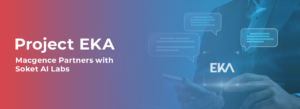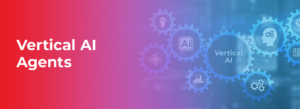- The Importance of High-Quality Training Data
- The Role of Photorealism in Training Data
- The Challenges in Acquiring Photorealistic Data
- Techniques in Generating Photorealistic Training Data
- Applications of Photorealistic AI Training Data
- Ethical and Privacy Concerns
- Future Trends and Opportunities in Photorealistic Training Data
Photorealistic AI Training Data: Shaping the Future of AI Models
Artificial intelligence (AI) has moved from a lofty concept to a transformational force in industries ranging from healthcare to retail. At the heart of every effective AI model lies high-quality training data. However, photorealistic AI training data plays a key role in ensuring accuracy and efficiency when it comes to tasks requiring visual understanding or intricate modeling.
But what exactly is photorealistic AI training data? Why is it critical for the performance of AI systems? And how is the world of AI benefiting from this technological advancement? Keep reading as we unravel why photorealistic data is indispensable for modern AI and discover how innovations in this field are shaping industries and lives.
The Importance of High-Quality Training Data
AI systems need high-quality data to “learn” and improve accuracy. For instance, an autonomous vehicle attempting to identify pedestrians or obstacles must rely on vast amounts of visual data to make real-time decisions. Poor-quality or biased data leads to errors that could be costly—or even life-threatening.
The Role of Photorealism in Training Data
Photorealism introduces exceptional detail and realism into training data. AI models, especially computer vision systems, can better interpret objects, backgrounds, and nuanced visual features when the data is nearly indistinguishable from real-world scenarios. For example:
- Medical imaging AI can identify subtle anomalies with greater precision.
- Retail-based AI systems create hyper-personalized shopping experiences.
- Surveillance systems ensure enhanced safety with accurate object detection.
Yet, capturing vast quantities of high-quality, photorealistic AI training data can be resource-intensive and challenging.
The Challenges in Acquiring Photorealistic Data
- Cost: Capturing high-resolution images or videos for photorealistic datasets requires expensive equipment and more investment.
- Variety: Real-world scenarios are limitless, and acquiring data representing diverse edge cases can be difficult.
- Privacy Concerns: Realistic human imagery often triggers ethical debates on privacy and consent.
This is where advanced generation techniques come into play, streamlining the way photorealistic data is generated.
Techniques in Generating Photorealistic Training Data
AI models demand accuracy and coverage, which traditional methods of collecting training data often fail to deliver. To address this, new methods for creating photorealistic data have emerged. Below are some innovative approaches experts are leveraging:
1. Generative Adversarial Networks (GANs)
GANs simulate photorealistic images that mimic real-world scenarios by pitting two neural networks against each other—a generator and a discriminator. While one network creates imagery, the other critiques it, ensuring the final output is incredibly lifelike. GANs are widely used in fields such as healthcare for producing realistic medical scans.
2. Synthetic Data Generation
Synthetic data uses computer-generated imagery to replicate realistic scenarios. For instance, autonomous vehicles can be trained using synthetic cityscapes without physically gathering footage from real-life streets. Tools like Unity and Unreal Engine simulate highly realistic environments to train computer vision algorithms.
3. Data Augmentation
Data augmentation enhances existing datasets by adding controlled variations. Techniques such as flipping, rotation, scaling, and altering lighting conditions amplify a dataset’s ability to mimic real-world diversity. This is particularly helpful in domains like sentiment analysis or facial recognition.By combining these methods, companies like Macgence are advancing the way AI researchers and developers craft effective models. The result? More accurate, efficient, and unbiased AI systems.
Applications of Photorealistic AI Training Data
How is this advancing AI in the real world? Here are some exciting applications of photorealistic training data across industries:
1. Autonomous Vehicles
AI-powered autonomous vehicles rely heavily on photorealistic datasets to learn how to detect and respond to objects on the road—pedestrians, other vehicles, traffic signs, etc. Synthetic cityscapes have played a pivotal role here, creating training conditions for complicated driving environments.
2. Healthcare & Medical Imaging
Medical AI systems diagnose diseases through image detection. Photorealistic data helps generate training sets that account for rare conditions, which might be too scarce to compile in real-life data. For example, GAN-generated images of X-rays have improved early detection of abnormalities.
3. Retail and E-commerce
Online retailers use AI to create virtual try-on applications (for clothes, makeup, etc.) and generate customer behavior forecasts. High-grade visual datasets are essential for creating lifelike simulations.
4. Gaming and Augmented Reality (AR)
Immersive gaming and AR applications, such as virtual fitting rooms, depend on photorealistic training data for realistic user interaction and optimal experience.
Photorealistic AI training data is the unseen hero driving innovation across these industries. However, with great power comes significant ethical responsibility.
Ethical and Privacy Concerns
While the advantages of photorealistic data are clear, ethical challenges cannot be ignored. Realistic datasets that mimic human appearances often blur the lines between reality and fiction, raising important questions regarding:
- Privacy: Human data, even when anonymized, can lead to breaches if not responsibly managed.
- Bias in Data: AI trained on narrow data becomes biased, harming vulnerable demographics.
- Misuse of Deepfakes: There is a potential risk of using GANs to create malicious, photorealistic deepfakes.
Companies like Macgence are leading discussions about setting global standards for data governance. By emphasizing transparency, ensuring informed consent, and anonymizing sensitive data, the technology can evolve responsibly.
Future Trends and Opportunities in Photorealistic Training Data
The field of photorealistic data generation is dynamic and holds immense promise. Some trends to watch include:
- Automated Dataset Creation: Advances in AI will further simplify generating large-scale, photorealistic datasets tailored for specific AI applications.
- AI Models with Minimal Data Inputs: Fewer data demands will drive down the overall cost of training AI models while maintaining high performance.
- Improved Simplicity for Entry-level Researchers: Cloud-based tools will empower smaller businesses to generate photorealistic data without deploying complex infrastructure.
Innovative data firms like Macgence are setting the stage to empower tomorrow’s tech innovators by providing tailored, high-quality training datasets.
Photorealistic Data is the Backbone of AI Innovation
Photorealistic AI training data is not just about creating better-performing models—it represents an opportunity to build smarter, more inclusive technology that reflects the diversity and complexity of the real world.
For AI researchers, data scientists, and business leaders, investing in photorealistic AI training data is no longer optional; it’s the key to staying ahead in a rapidly evolving technological landscape.Need help with simplifying the process? Reach out to Macgence today to access expertly curated photorealistic training samples tailored to your project needs. Together, let’s shape the future of AI.
FAQs
Ans: – Photorealistic data ensures AI systems understand and replicate real-world scenarios better, leading to more accurate predictions and decisions, particularly in applications like healthcare and autonomous vehicles.
Ans: – Industries such as autonomous vehicles, healthcare, retail, gaming, and augmented reality receive immense value from photorealistic training data in enhancing system accuracy and user experiences.
Ans: – Macgence specializes in generating reliable and ethically designed photorealistic datasets using advanced techniques like GANs and synthetic data to address AI challenges.Explore how photorealistic AI training data boosts model accuracy, impacts industries like healthcare & retail, and sets the future of AI innovation in motion.
You Might Like
February 28, 2025
Project EKA – Driving the Future of AI in India
Artificial Intelligence (AI) has long been heralded as the driving force behind global technological revolutions. But what happens when AI isn’t tailored to the needs of its diverse users? Project EKA is answering that question in India. This groundbreaking initiative aims to redefine the AI landscape, bridging the gap between India’s cultural, linguistic, and socio-economic […]
March 7, 2025
What is Data Annotation? And How Can It Help Build Better AI?
Introduction In the world of digitalised artificial intelligence (AI) and machine learning (ML), data is the core base of innovation. However, raw data alone is not sufficient to train accurate AI models. That’s why data annotation comes forward to resolve this. It is a fundamental process that helps machines to understand and interpret real-world data. […]
March 6, 2025
Vertical AI Agents: Redefining Business Efficiency and Innovation
The pace of industry activity is being altered by the evolution of AI technology. Its most recent advancement represents yet another level in Vertical AI systems. This is a cross discipline form of AI strategy that aims to improve automation in decision making and task optimization by heuristically solving all encompassing problems within a domain. […]
March 5, 2025
Use of Insurance Data Annotation Services for AI/ML Models
The integration of artificial intelligence (AI) and machine learning (ML) is rapidly transforming the insurance industry. In order to build reliable AI/ML models, however, thorough data annotation is necessary. Insurance data annotation is a key step in enabling automated systems to read complex insurance documents, identify fraud, and optimize claim processing. If you are an […]





